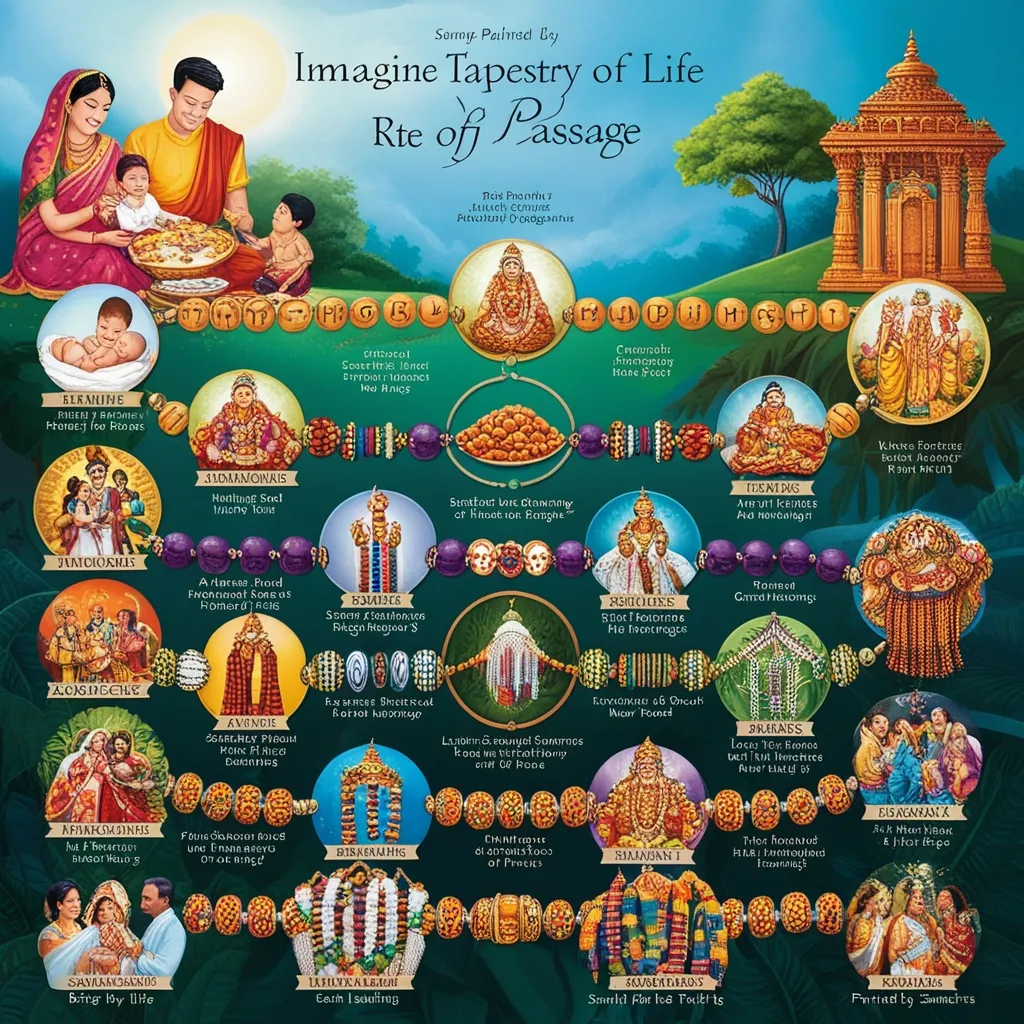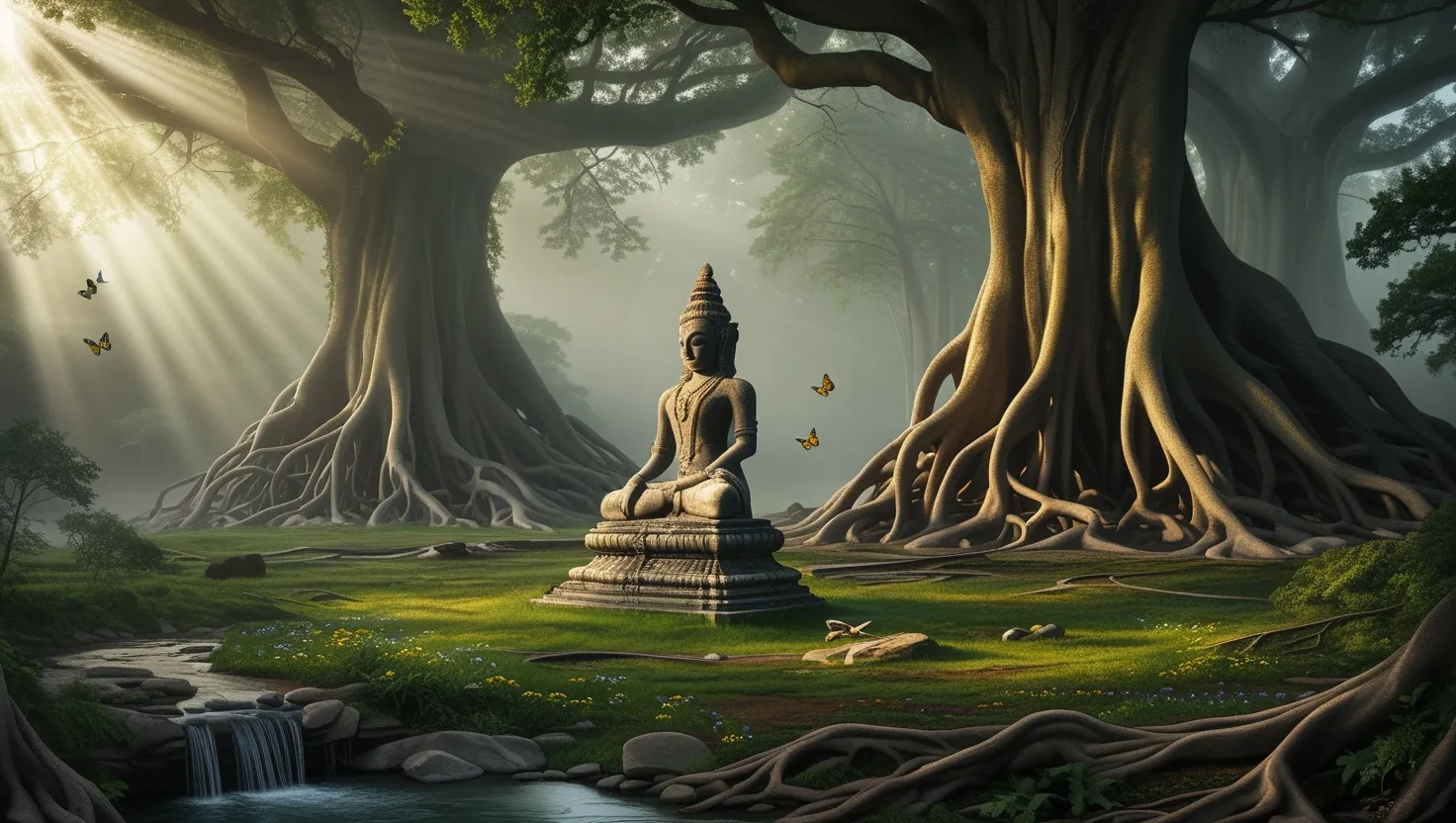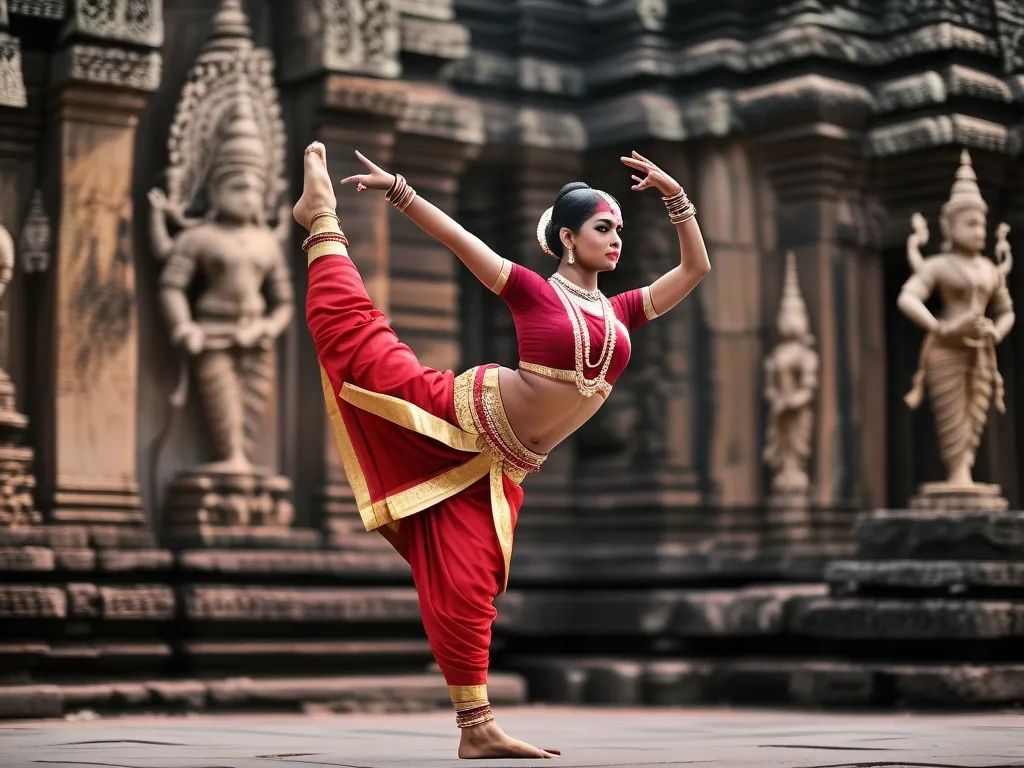In the vibrant tapestry of Hinduism, life is not just a series of days or years but a remarkable journey adorned with meaningful milestones known as Samskaras. Imagine these as beautiful beads on the necklace of life, each representing significant rites of passage, from the whisper of conception to the echoes that linger after death. These rituals aren’t merely ceremonies; they are celebrations, guardians of tradition, and pathways to spiritual, cultural, and psychological enrichment.
Samskaras literally translate to “making perfect, preparing, or putting together,” a fitting nomenclature for these rites. They welcome individuals into new life stages, granting privileges, establishing duties, and presenting them with a new role within their community. Intriguingly, these rituals are believed to cleanse past karma and convert it into virtues, guiding one’s journey toward spiritual perfection.
Before life even begins in its recognizable form, Samskaras step in. Four of these rites occur during pregnancy, honoring the profound period before a newborn enters the world. The Garbhadhan ceremony starts this sacred journey, characterized by a couple’s mindful preparation for conceiving a child blessed with health and intelligence. Following this, Pumsavana sees the father crafting a special dish for the expectant mother, accompanied sometimes by a yajna, a fire ritual, safeguarding the mother and child’s health.
A burst of joy follows with Simantonayana, or the baby shower. This rite occurs around the seventh month, celebrating motherhood with love, blessings, and gifts from friends and family, creating a cushion of positive emotions around the soon-to-be mom. After the stork arrives with its precious bundle, the Jatakarma unfolds on the sixth day after birth. Here, a tender moment is shared as honey and ghee are offered to the baby’s lips, multiplying the joy and binding the family closer.
As children grow, Samskaras continue to mark their journey, starting with the Namakaran or naming ceremony, which occurs on the tenth or eleventh day. From there, the Niskramana celebrates the child’s first brave steps into the world, followed by Annaprasana, introducing them to solid foods around the six-month mark. Each of these ceremonies builds upon the child’s life, grounding it with love and tradition.
As toddlers blossom into children, the Chudakarana comes into play, representing purification and renewal through the first shaving of the head. The Karnavedha follows, an ear-piercing ritual believed to enhance well-being and, surprisingly, offering its own dash of style.
When the winds of adolescence start to blow, the Upanayana becomes the focus. This rite is a stepping stone into formal education, much like a spiritual rebirth into a world of knowledge. It’s akin to setting foot on a path paved with the wisdom of the Vedas, guided by the sacred thread draped over one’s shoulder—a symbol of readiness to embrace learning.
As time moves steadily forward, other coming-of-age rituals beckon. The Vedarambha marks the formal start of Vedic and Upanishadic studies, each child diving into the treasures of their lineage. Keshanta, marking the first shave of facial hair, symbolizes the entrance into adolescence, alongside a vow of chastity—a youthful stepping stone bridging childhood to the more serious domain of adulthood.
For girls, Ritusuddhi is a celebration of womanhood, marking the onset of menstruation amidst gifts, love, and new responsibilities symbolized by the sari—a dance of tradition and transition.
When love blooms into commitment, Vivaha, the marriage Samskara, steps in. It’s a grand tapestry of rituals, a symphony of traditions that sees couples exchange vows amidst sacred fires, taking seven steps that promise a life filled with prosperity, love, and a shared destiny.
As one’s educational journey rounds off, Samavartana awaits, marking the end of student life. It’s a plunge into a new world, armed with knowledge and gratitude, as students thank their gurus with appreciation gifts, stepping forth as Vidyasnatakas—those bathed in enlightenment.
The final chapter of the Samskara journey is Antyeshti, the funerary rite. It’s a farewell that encompasses cremation, ash disposal, and offerings meant to support the soul’s transition into the ancestral realm. Memorial rites later honor the departed, weaving them into the living fabric of familial memory.
Bringing these ancient, spiritually rich rituals into today’s fast-paced life stories offers a balm against stress and isolation. Samskaras aren’t just antiquated practices; they are opportunities to carve meaningful experiences, fostering community connections, spiritual warmth, and personal growth.
Even in modern times, adapting these rituals can be a path to growing into each chapter of life with joy and responsibility. Whether it’s celebrating milestones like the sweetness of a baby’s first laugh or the heartfelt vows at a wedding, Samskaras help to frame life’s passages with meaning. They invite elders and spiritual figures to lend their insights and blessings, creating bridges between generations.
Incorporate these moments of reflection and purification, opportunities to cleanse the past and embrace future chapters with open arms and open hearts. Even educational journeys can carry the weight of tradition, with ceremonies marking the dawning love for learning that encompasses both secular and spiritual growth.
Adopting the essence of Samskaras, individuals can weave meaningful threads into the vast tapestry of their lives, celebrating the delicate balance between ancient traditions and the vibrant energy of contemporary existence. What flowers is a life rich with narrative and significance, one that respects its roots while reaching fearlessly towards the future.






